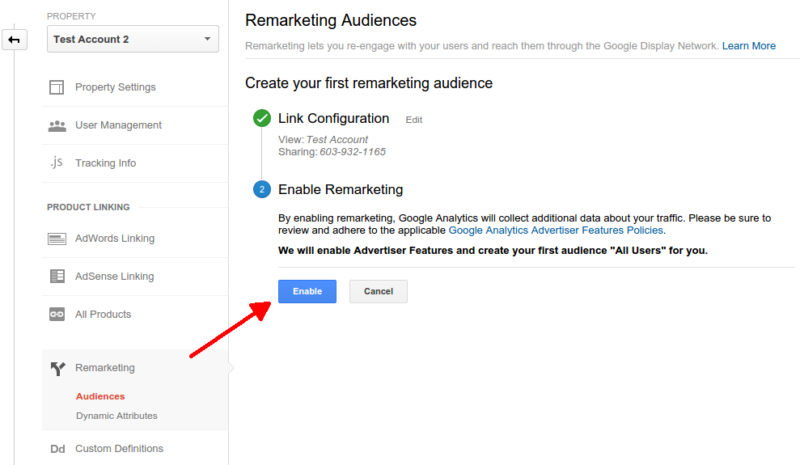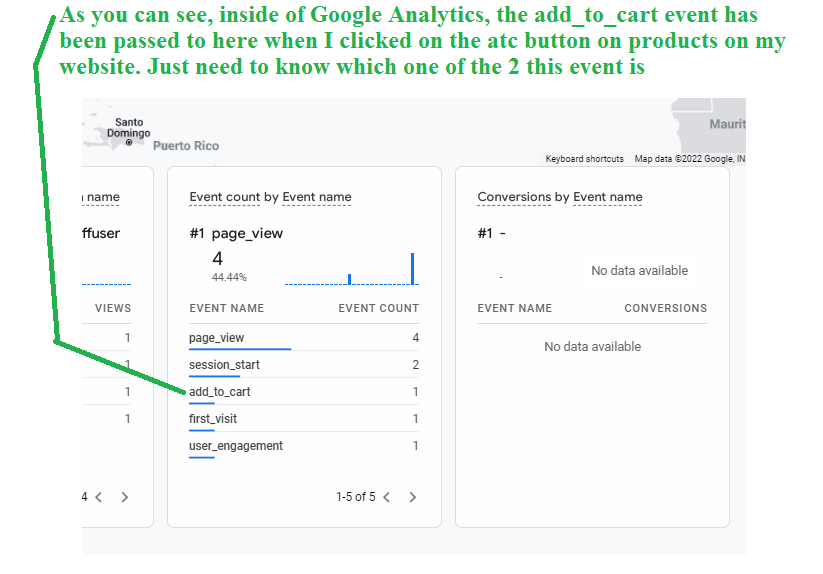A Complete Guide to Remarketing In Google Analytics
Utilizing Remarketing in Google Analytics: A Comprehensive Overview
Using remarketing in Google Analytics uses companies a strategic side in reaching out to potential clients. This overview will certainly shed light on the crucial steps included in harnessing the complete capacity of remarketing in Google Analytics, leading to improved advertising results.
Recognizing Remarketing in Google Analytics
Remarketing in Google Analytics permits businesses to purposefully target users that have formerly engaged with their internet site or mobile app. By leveraging information from Google Analytics, services can develop customized remarketing lists based on user behavior, such as pages seen, activities taken, or particular objectives achieved. This powerful tool allows businesses to re-engage with individuals that have shown passion in their solutions or items, inevitably raising the likelihood of conversion.
Comprehending the various sorts of remarketing approaches is crucial for an effective campaign - What Is “Remarketing” In Google Analytics?. Google Analytics supplies numerous choices, consisting of common remarketing, dynamic remarketing, and remarketing checklists for search ads (RLSA) Each kind serves a distinct function and can be tailored to satisfy details advertising objectives
Furthermore, examining the efficiency of remarketing campaigns is vital for enhancing results. Google Analytics gives beneficial understandings right into the effectiveness of various remarketing techniques, permitting businesses to make data-driven choices and improve their targeting technique. By continuously adjusting and checking remarketing initiatives based upon analytics information, services can maximize ROI and drive success in their advertising and marketing campaigns.
Setting Up Remarketing Campaigns

After setting up audience checklists, the next action is to connect Google Analytics with Google Advertisements. By linking these two systems, businesses can effortlessly move audience lists from Google Analytics to Google Ads for remarketing objectives. This combination permits even more specific targeting and far better project performance.
Once the accounts are linked, businesses can create remarketing campaigns in Google Advertisements making use of the target market details formerly specified in Google Analytics. These projects can be tailored with specific advertisement creatives, messaging, and bidding process methods to efficiently re-engage with previous site visitors and drive conversions. By following these steps, organizations can leverage the power of remarketing to boost their advertising and marketing initiatives and increase ROI.
Using Audience Division Approaches

Predefined segments in Google Analytics enable you to promptly assess common audience categories like brand-new individuals, returning customers, or customers that finished a certain goal on your site. Personalized segments, on the various other hand, enable you to create special sectors based on details the original source criteria that are necessary to your service objectives. Dynamic remarketing lists instantly adjust based on individual habits, showing tailored advertisements to users that have connected with your site specifically means.
Studying Remarketing Efficiency Metrics
Upon reviewing the performance of remarketing projects in Google Analytics, the evaluation of key efficiency metrics provides valuable insights into audience interaction and conversion prices. By delving into metrics such as click-through rates (CTR), conversion prices, cost per acquisition (CPA), and return on ad spend (ROAS), marketing professionals can gauge the success of their remarketing efforts. CTR indicates the percentage of customers who clicked on the advertisement after seeing it, mirroring the advertisement's relevance and appeal. Conversion rates determine the percent of individuals who completed a desired action, such as making an acquisition, after clicking the advertisement. CPA exposes the typical expense sustained for every conversion, helping examine campaign profitability. ROAS, on the various other hand, evaluates the revenue produced for every single buck invested in advertising and marketing. Analyzing these metrics allows marketing experts to optimize campaigns, improve target market targeting, and assign budgets efficiently to improve general remarketing performance.
Enhancing Remarketing Strategies
When refining remarketing techniques in Google Analytics, concentrating on audience division is extremely important for achieving project success. By dividing your target market into particular segments based on their actions, demographics, or interests, you can customize your advertisements extra efficiently to every group. This targeted strategy enhances the likelihood of involving customers who have currently revealed interest in your solutions or products, resulting in higher conversion rates.
Another critical aspect of enhancing remarketing approaches is continuously screening and refining your projects (What Is “Remarketing” In Google Analytics?). A/B testing different advertisement creatives, messaging, or deals can assist you identify what reverberates best with your target market and drives the most conversions. By evaluating the performance you can try here of these tests in Google Analytics, you can make data-driven decisions to enhance your remarketing efforts better
In addition, leveraging dynamic remarketing can substantially boost your project results. This function permits you to show personalized advertisements to users based on their past communications with your website, showcasing service or products they have previously viewed. By supplying customized web content to individuals based upon their rate of interests and behaviors, dynamic remarketing can aid enhance involvement and drive conversions.
Verdict
To conclude, taking advantage of remarketing in Google Analytics is a critical approach to target customers who have formerly involved with a web site. By developing personalized audience checklists and using audience segmentation approaches, businesses can maximize remarketing campaigns for raised conversion prices. Examining performance metrics and continually enhancing strategies are vital for making best use of the effectiveness of remarketing efforts.
Google Analytics uses numerous choices, consisting of standard remarketing, vibrant remarketing, and remarketing listings for search ads (RLSA)After establishing up audience lists, the next step is to connect Google Analytics with Google Ads. By connecting these two platforms, businesses can perfectly transfer audience checklists from Google Analytics to Google Advertisements for remarketing purposes.When the accounts are connected, organizations can create remarketing campaigns in Google Advertisements using the target market provides previously specified in Google Analytics.When refining remarketing techniques in Google Analytics, concentrating on target market segmentation is vital for attaining project success.